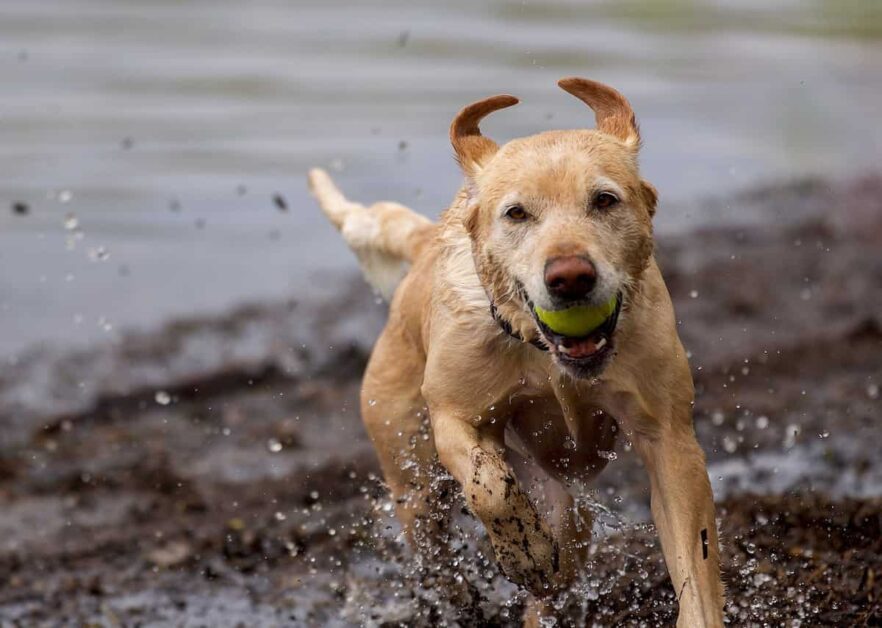Labrador retrievers are among the most beloved American dog breeds. They are loved for their friendly and playful personalities. Their swimming ability sets them apart from other breeds. Want to know why do labradors love water?
Labradors can’t resist jumping in and splashing around, whether in a lake, river, or puddle. They are great swimmers, have webbed feet, and have an affinity for water. The roots for swimming are in their ancestral origin.
Labradors were bred to swim, and their physical features support it. While factors like past experiences matter, early introduction benefits. Be patient to see your lab swim gradually with confidence.
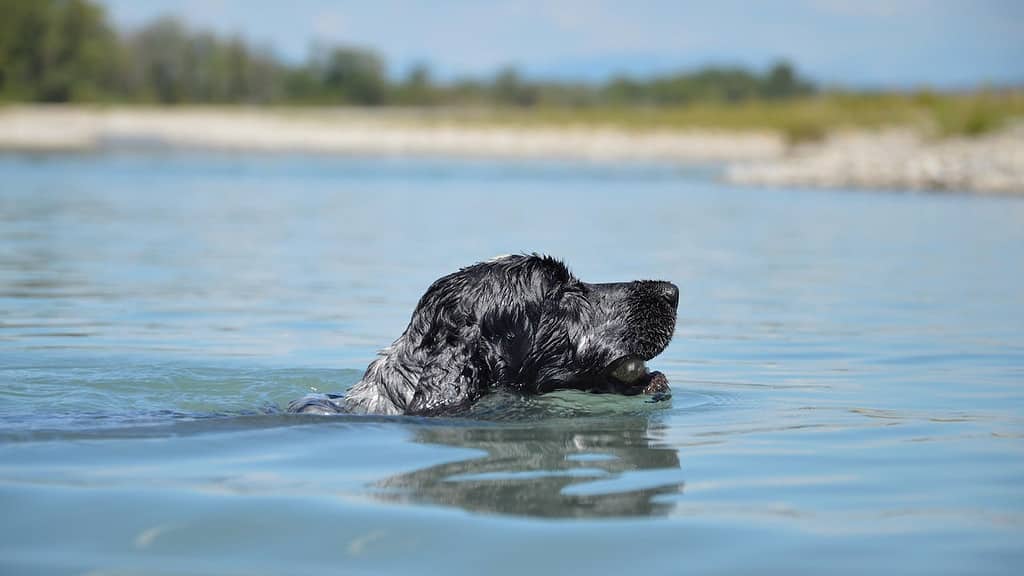
are labradors good swimmers?
Labrador Retrievers were bred for their love of swimming and retrieving. Fishermen needed strong swimmers for hunting ducks and retrieving fish from the water. Some similar breeds with webbed feet are the Portuguese water dogs.
John’s Water Dogs Bred To Swim
Fishermen in Newfoundland would send their St. John’s water dog into cold water to retrieve fish. It was done to create a natural affinity for swimming.
Labrador’s webbed feet, otter-like tail, and thick coat make them excellent swimmers even in cold waters. The breed’s love of water has been passed down through generations. Early gene pool selection by breeders painted them as working dogs with strong swimming abilities.
Selective breeding resulted in Labradors being one of the best breeds for swimming and retrieval. They like to swim, and this natural ability is evident even today. From shallow streams to deep lakes, these natural retrievers find fun anywhere.
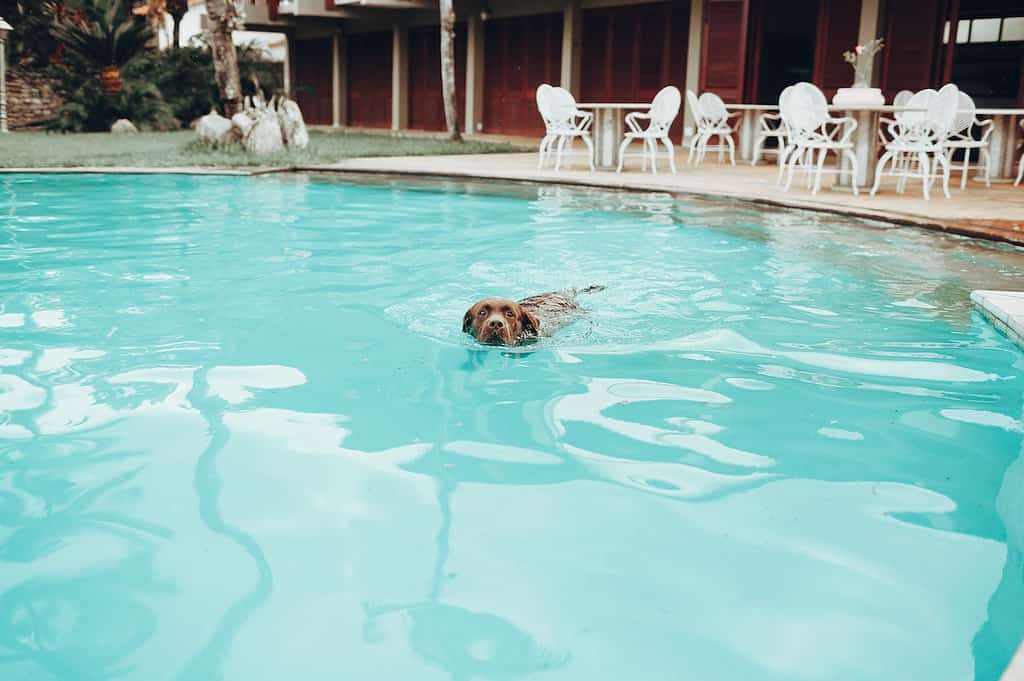
Did The Modern Labrador Break Away From Its St. John Roots?
Labradors entering the show ring is a recent phenomenon. They can be traced as working dogs since their arrival. However, the work mode differed, with the modern Labrador breaking away from its St. John roots. They are less involved with fishing.
The English Noblemen look at labs as prized canine companions for their hunting trips. It was due to their enhanced ability to retrieve downed waterfowl. Breeders purposely choose parents’ dogs with excellent swimming abilities. Their thick, waterproof coat is a proof of their working dog abilities.
Unique Physical Traits That Aid Swimming
Labs webbed feet enable them to paddle through the water easily. The otter-like tail acts as a rudder, helping them quickly change direction. Lab’s double coat provides insulation and regulates their body temperature. The thick, waterproof coat allows them to stay warm and dry when swimming for extended periods.
Labradors’ physical features make them the best swimmers among AKC breed standard dogs. Their large paws create more surface area for gripping and propelling. Their muscular bodies generate power for diving and retrieving objects underwater.
Owners should introduce Labs to safe swimming environments early on. Providing proper training maximizes enjoyment in the water.
Factors That Determine If A Labrador Retriever Will Love Water
Several factors determine if a Labrador will love water. It includes potential fear of the unknown, negative past experiences, and breed divergence.
Potential Fear Of The Unknown
Labradors may initially fear water due to their instinct to avoid unfamiliar environments. This can happen especially with rescue dogs or those not introduced to water early in life. Proper training and socialization help them overcome fear and eventually enjoy swimming.
Negative past experiences, such as being forced into the water or harsh treatment during swim sessions, lead to a phobia. Owners must create positive associations with the water. Start slowly and ensure each step is done calmly and positively. With patience and consistency, your dog will soon happily splash around in the water!
Negative Past Experiences
Labradors may have negative past experiences affecting their love for the water. They range from drowning incidents to being forced into the water against their will. The breed naturally develops fear or anxiety about swimming.
Take these fears seriously, and do not force your dog into the water if they show distress. You can gradually help your pup overcome fear with patience and gentle encouragement. Use positive reinforcement techniques like treats and praise.
Ensure that swim sessions are supervised and follow safety precautions. Use a well-fitting life jacket if necessary.Every Labrador is unique, so be understanding and respectful.
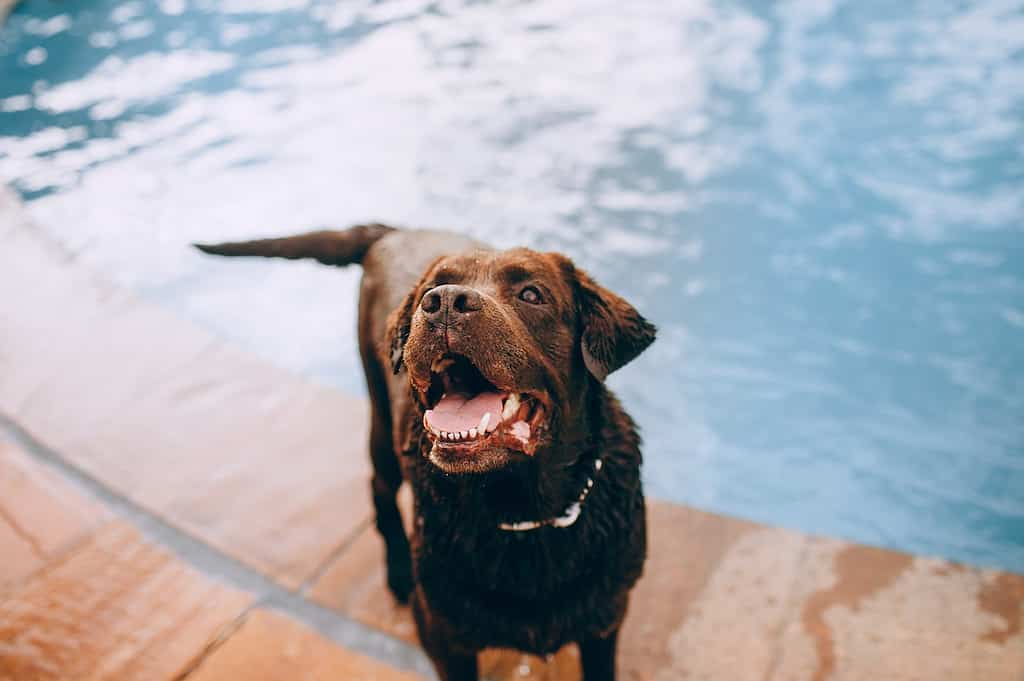
Breed Divergence
Not all Labradors automatically love water. Some have a natural aversion or fear of it. This can be attributed to breed divergence over time or negative past experiences. Many Labrador owners suggest patience and proper training are beneficial.
While some Labradors take to the water readily, others may require more gentle encouragement. Introducing your dog gradually and starting early can help ensure a positive experience. Teaching basic commands such as “come” and “stay” is essential for safety reasons.
Does Swimming Come Naturally To All Labs?
Swimming comes naturally to most Labrador Retrievers, but not all of them. Some Labs may be hesitant around water or even afraid of it. This could be due to several factors, such as a negative experience with water in the past or simply a lack of exposure.
However, most Labs are bred to be water dogs. They have some physical characteristics that make them good swimmers, including a strong build, webbed paws, and a thick double coat that helps to insulate them from the cold.
If you have a Labrador Retriever, it’s important to introduce them to water safely and positively. Start by taking them to a shallow body of water, such as a kiddie pool or a lake with a gradual slope. Encourage them to play in the water and splash around. Once they seem comfortable, you can try teaching them to swim.
How To Introduce Your Labrador To Water?
If you’re a proud lab owner, you already know their love for water! But what do you do if your lab puppy seems hesitant or afraid? Let’s explore why Labradors are natural swimmers and how to introduce your dog to swimming. From teaching basic commands to starting early and being patient, we’ll help you turn your pup into a swimming pro in no time!
Teaching Basic Dog Commands
Teaching basic dog commands is essential.
- Start with simple commands like “sit” and “stay” to keep control over your dog during swimming sessions.
- Reward them with treats and praise for obeying the command. It will encourage a positive association between training and water.
- Move to more advanced commands like “come” or “fetch” once they have mastered the basics.
These commands are handy in deep water or want to call your pup back. Patience is key when teaching new skills, so don’t be discouraged if it takes time.
Starting Early
Introducing your dog to water early on in their life is essential. It develops a positive association with water and swimming.
- Begin by gradually introducing them to shallow water and rewarding them for voluntarily entering it.
- Never force your dog into the water or throw them in.
- Starting early and taking things slow can set the foundation for a happy and confident swimmer.
Patience Is Crucial
It’s essential to have patience. Some lab puppies are hesitant initially. It is important not to force them into the water.
- Never create a negative experience that will make future attempts more difficult.
- Training your Labrador to swim takes time, and there is no rush. Each pup progresses at its own pace.
- Start by playing in low waters before venturing further as his confidence grows. With your persistence and patience, he’ll soon become a confident swimmer.
- Teaching basic commands like ‘come’ or ‘stay’ with patience. Puppies need repetition and positive reinforcement to understand what’s expected of them.
- Always reward good behavior with treats!
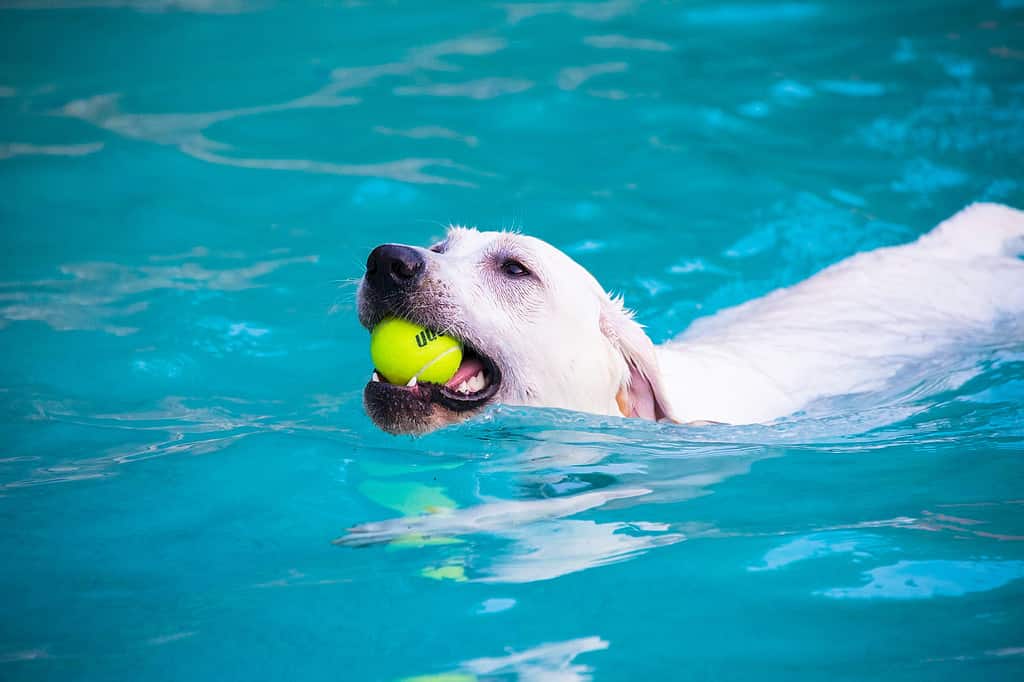
Steps To Train Your Labrador To Swim Like A Pro
But have you ever wondered why? What makes this dog breed attracted to aquatic adventures? Let’s dig deep into the origins of Labrador Retrievers and their unique physical traits that aid swimming.
Step1: Introducing Your Pup To Water
Labrador Retrievers love water, and it’s not hard to see why. Wagging tails and lolling tongues indicate these dogs were meant to swim. Slowly introduce the pup to shallow water
Swimming With Your Labrador
Swimming with your Labrador is a fun activity to enjoy together.
- Start in shallow and calm waters when introducing your pup to the water.
- Teach basic obedience commands before letting your lab swim freely.
- Once your dog is comfortable swimming, play fetch in the water to make it exciting.
- Always monitor your dog’s energy levels and ensure they wear a dog life jacket.
Fetch Game In The Water
Playing fetch with your Labrador in the water is a great way to bond and improve their swimming skills. Start by tossing a ball or toy into shallow water, gradually increasing the distance and depth. Use a brightly colored object that’s easy for your dog to see in the water.
Do not throw objects too far from shore. Especially if you’re at an unfamiliar location or there are strong currents. Also, not all dogs are natural swimmers and may need help retrieving objects.
Swimming With Other Dogs
Swimming with other dogs is excellent for socializing your Labrador while providing exercise and fun. Labradors’ love for water makes it easy for them to enjoy playing alongside other pups in the water.
- If you plan on swimming with other dogs, introduce your Labrador slowly and carefully.
- Keep a close eye on them. Remember that not all breeds share the same enthusiasm for water as Labradors.
- Always supervise playtime and ensure safety by using life jackets.
- Ensure that water is safe and clean before allowing your pet to swim in them.
Teach Your Pet To Swim Underwater
Teaching your Labrador to swim underwater can be a fun experience. Introduce your pup to less water and progress to deeper depths. Encourage them to dive down using toys or treats as motivation. (Not all Labs will naturally take to swimming underwater, so don’t force it if they seem uncomfortable)
Supervise your dog when they’re in the water and use a properly fitted life jacket for added safety. Especially when attempting new techniques like swimming underwater for extended periods or diving.
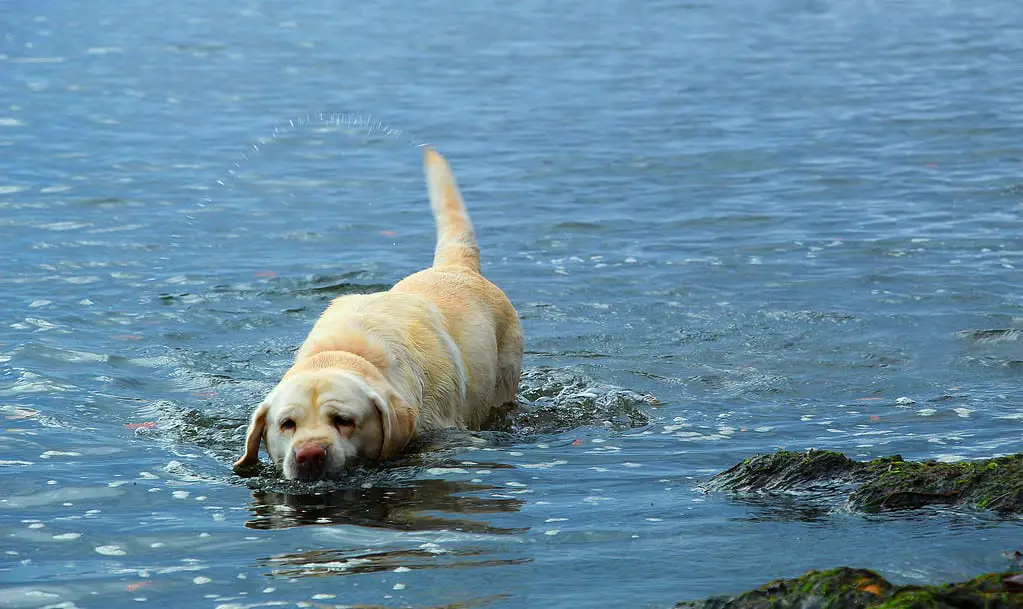
Why Are Some Labradors Afraid Of Water?
Some Labs develop a fear of water due to negative past experiences like being caught in strong currents or almost drowning. Breed divergence and potential fear of the unknown also play a vital role. If your Labrador puppy was not introduced to water early, they find it unfamiliar and scary.
Introduce your dog gradually to the water. Teaching basic commands like “come” and “stay” will help you keep control of your pup.
With time and patience, most Labs can overcome their fear of water. They can learn to love it just like their ancestors, who were excellent swimmers. Moreover, they were originally bred for working purposes by fishermen centuries ago.
Safety Precautions For Your Labrador During A Swimming session
When it comes to swimming, a labrador is a natural swimmer. As a dog lover, taking safety precautions is crucial during every swim session.
- Firstly, invest in a well-fitting life jacket. It helps them stay buoyant and visible in the water.
- Secondly, pay close attention to the water temperature and depth. Labrador retrievers can handle cold waters thanks to their waterproof double coat. Letting your dog swim in too-cold water puts them at hypothermia risk, so be careful.
- Finally, supervise your labrador closely while they are swimming. With their playful nature and eagerness to explore new spots, labs might sometimes venture too deep into the waters. They also follow other dogs that are not suitable companions.
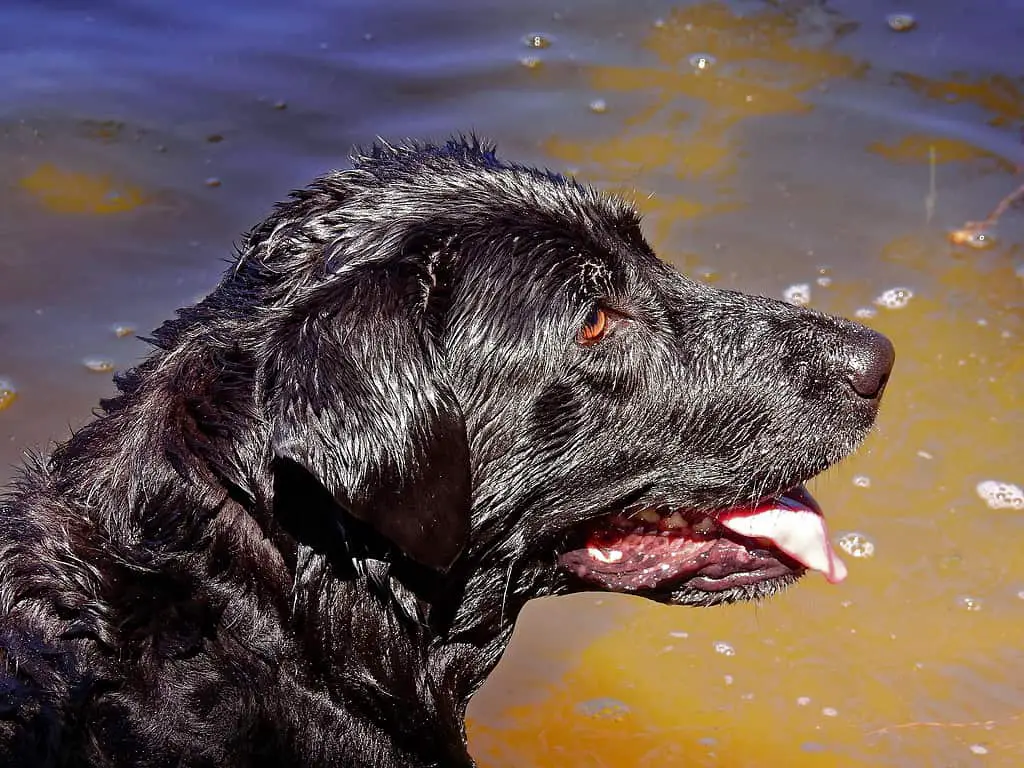
Benefits Of Letting Your Labrador Swim
There are numerous benefits to allowing your Labrador to swim.
Firstly, swimming keeps your pup physically fit and active. Physical exertion from swimming supports weight maintenance and cardiovascular health.
Secondly, swimming can be therapeutic for dogs suffering from arthritis or joint pain. The buoyancy of the water takes the pressure off their joints while still providing resistance training. Swimming help relieves stress and anxiety due to its calming effects.
Thirdly, many owners find their labrador’s coat to stay shinier and healthier after regular swims. Natural oils are distributed evenly throughout their fur while splashing around.
Keeping your Labrador clean with regular bathing after swims limit itchiness. Dirt is trapped underneath any layer within the double coat. Swimming prevents skin infections or other related medical issues.
Choosing A Perfect Swim Spot For Your Labrador
Safety should be top when choosing a swimming spot for your Labrador. Look for swimming areas that have less water and no dangerous currents. Consider the water temperature – avoid letting your pet swim in too cold temperatures.
Enquire whether other dogs are allowed at the swimming spot. While Labs love playing with other dogs, not all pups may get along. Always supervise your pet when they’re around unfamiliar dogs.
Lastly, choose a location where you feel comfortable and confident swimming with your dog. Talk to a veterinarian or animal behaviorist if you’re unsure about swimming or introducing your pup to water. Advice and guidance ensure an enjoyable and safe experience.
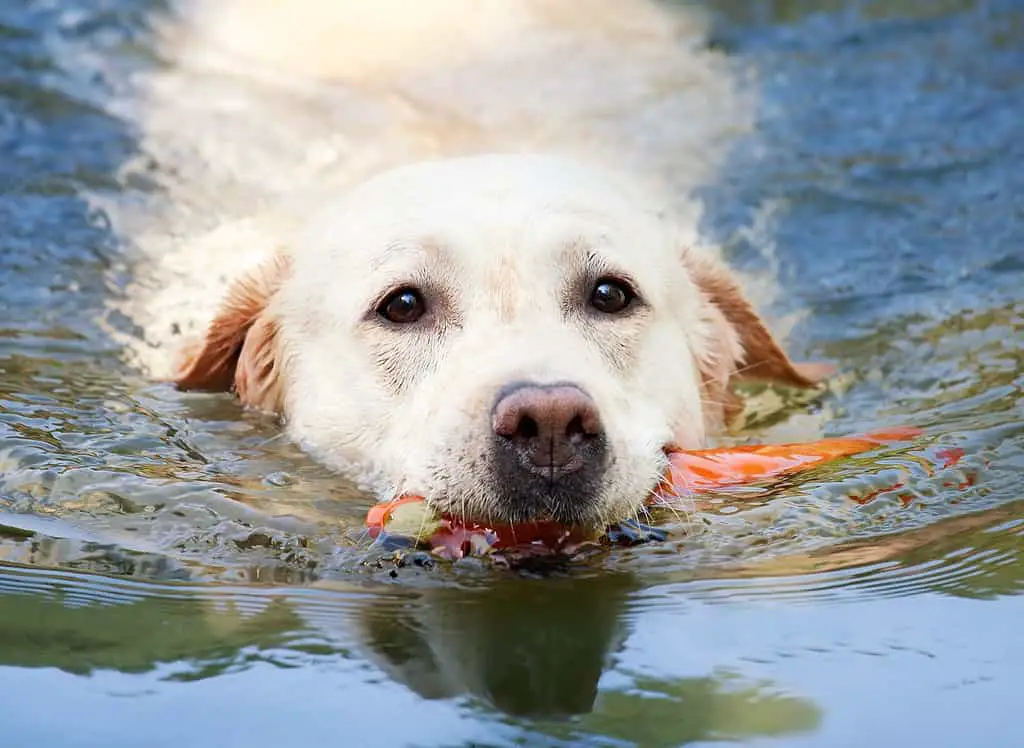
FAQs:
why do labs love water?
Labradors naturally love water due to their genetics as retrievers. They were bred as hunting dogs to retrieve the game from the water. This has resulted in a solid instinctual attraction toward any water-related activity.
are labs good swimmers?
While most Labradors are naturally skilled swimmers, there are always exceptions. Some may require more training or encouragement before feeling comfortable in the water.
Is my Labrador swimming safely in lakes and rivers?
It is generally safe for Labradors to swim in natural bodies of water such as lakes and rivers. Owners should be careful of toxic algae blooms, strong currents, or other potential hazards that could put their pets at risk.
How can I introduce my Labrador puppy to swimming?
Start by letting them wade in less water with you holding them securely until they feel confident enough to paddle independently. Don’t force your puppy into the water if they seem hesitant. It causes anxiety and fear.
What do you mean by Newfoundland breed?
The Newfoundland breed is the closest ancestor to the labrador retriever. Newfoundland is a coastal province near the Labrador Sea. The breed has webbed toes and water-repellant, two-layered coats like labradors. It is one of the best dog breeds for swimming.
Do black labs have webbed feet?
All colored labs have webbed feet. It is a breed trait that is not influenced by color.
How long is it ok for Labs to swim?
Swimming is a fun exercise. Labs can comfortably enjoy a 15 to 30-minute session, depending on their experience. 30-minute blocks are great for strong dog swimmers, while 10-minute sessions are recommended for inexperienced ones.
When is it ideal for Labs to learn swimming?
Labrador puppies may have limited strength to stand against the strong waters. It is best to begin the first swim session in shallow waters. Ensure your pup is fully vaccinated before entering the public waters. The swimming sessions with your dog must be positive, relaxing, and enjoyable.
how cold of water can a lab swim in?
Labradors have a thick double coat that helps to insulate them from the cold, but they can still develop hypothermia if they swim in water that is too cold for too long.
A good rule of thumb is to avoid letting your Lab swim in water below 50 degrees Fahrenheit (10 degrees Celsius). However, even water that is above 50 degrees Fahrenheit can be too cold for swimming, especially if your dog is wet or has a short coat
Author Profile

- Lifetime dog Enthusiast
- Shradha is a seasoned writer at Labradorandyou.com, an authoritative resource for all things Labrador Retriever. Her experience as a pet owner and dog enthusiast drives her to create meticulously researched and fact-checked content, offering valuable insights on Labrador training, grooming, and health. Each article reflects Shradha's passion and dedication, enriched by personal experiences with her beloved Labradors, Tom, and Kurt. Whether exploring breed-specific training techniques or providing product reviews, Shradha ensures Labrador owners receive the most accurate, up-to-date, and trustworthy information, aimed at enhancing their companions' health and happiness
Also by the author
-
 Lab-TypesJune 29, 2025Apostas Desportivas Online Login 1xbet 1xbet Com
Lab-TypesJune 29, 2025Apostas Desportivas Online Login 1xbet 1xbet Com
-
 casinoJune 29, 2025Легальные Букмекерские Конторы же России 2025 Топ 15
casinoJune 29, 2025Легальные Букмекерские Конторы же России 2025 Топ 15
-
 Lab-TypesJune 29, 2025Play & Win With $6000 Bonus
Lab-TypesJune 29, 2025Play & Win With $6000 Bonus
-
 Lab-TypesJune 29, 2025Mostbet Kg Официальный Сайт Мостбет Вход, Регистрация
Lab-TypesJune 29, 2025Mostbet Kg Официальный Сайт Мостбет Вход, Регистрация
